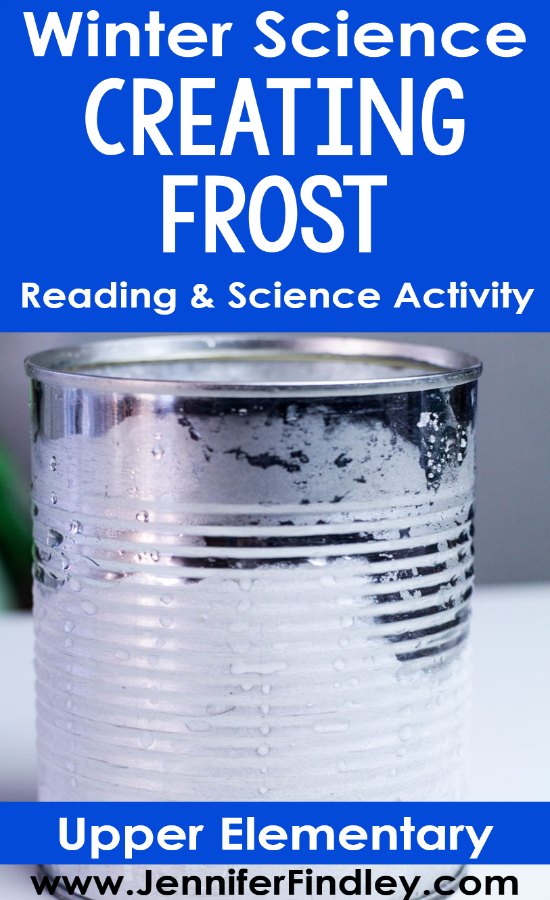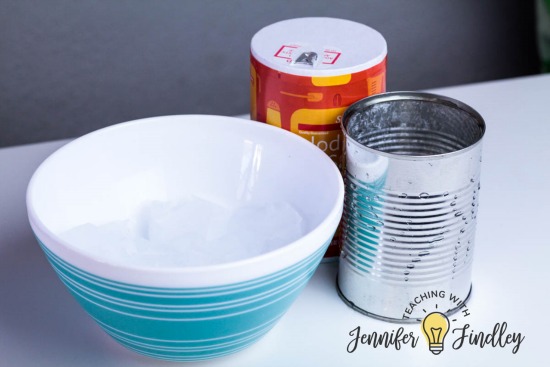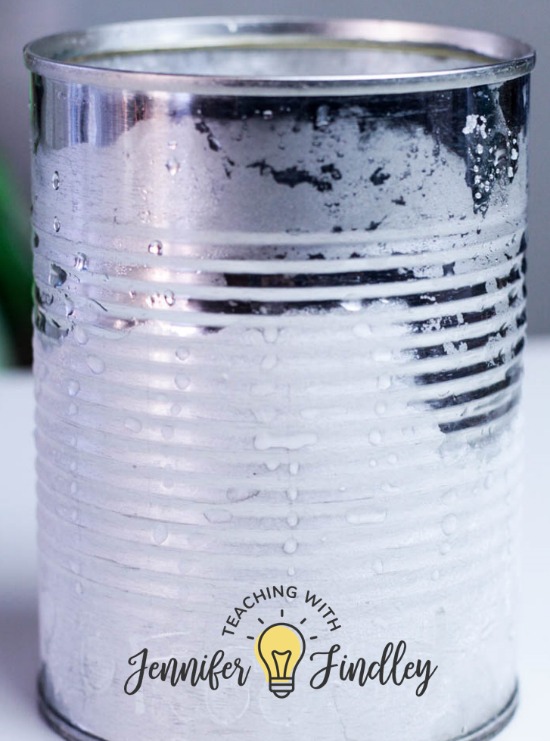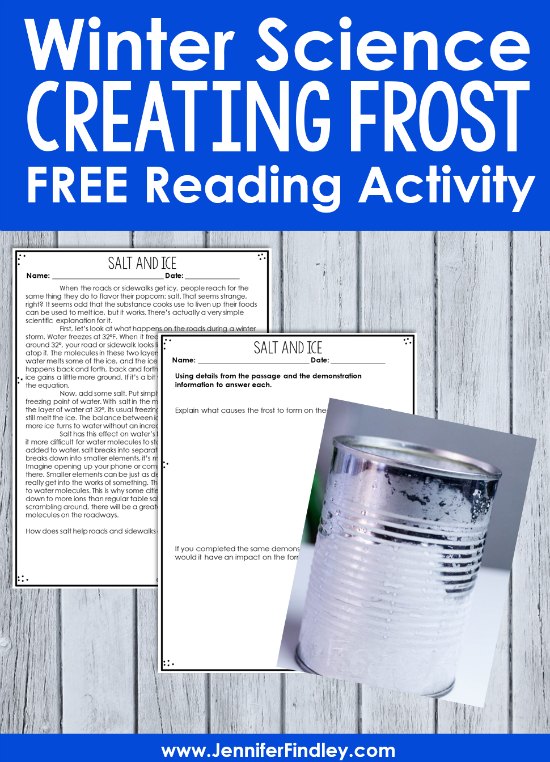Wintertime is the perfect time to implement winter science activities to engage your students (especially when indoor recess is the norm). Your students will love this particular winter science activity that has them creating frost. Even if a child has made frost in a can before, they will love repeating the experiment for the novelty factor. The free printables and reading passage included in this post (available at the end) will make this classic winter science activity engaging, rigorous, and relevant to 4th and 5th graders.

Creating Frost Materials Needed:
Empty metal cans
Ice or snow
Salt
Free reading passage and printables to make this relevant and appropriate for 4th and 5th graders –> available at the end of this post.
Winter Science: Creating Frost Directions:
1. Remove the sharp edges from the can before giving to children.
2. Fill each can with ice or snow.
3. Slowly start adding salt to the can and shake it gently to get things moving.
4. After a few minutes, frost will start to form on the outside of the can.

The Science Behind Frost in a Can
Salt is often used to melt ice on roads and sidewalks during the winter. This is because salt temporarily lowers the freezing point of ice, allowing the ice to melt faster and preventing the water from re-freezing. However, when the salt is surrounded by a large quantity of ice or snow, the water vapor around the can also falls below freezing. This causes frost to form on the outside of the can as a form of icy condensation.
Download Winter Science: Creating Frost Reading Activity and Printables
For this science activity, you can read the passage (with details the impact of salt) before or after completing the activity. There are advantages to both. Reading beforehand will build background knowledge and help them see the science behind the activity while it is being performed. If you choose to read it afterward, you will have an experience to help them understand the science being explained in the passage. Click here or on the image to download the reading passage and printables that pair with this winter science activity (and allow you to up the rigor for your 4th and 5th grade students).
For the questions, make sure the students use both the passage and the demonstration information (on the directions page). This will give them a better understanding of how the science relates to the activity and will be great practice at integrating information from multiple sources.
Follow-Up or Discussion Questions:
- Is the salt necessary to make the frost on the can?
- Will frost form in other materials, such as glass or plastic?
- What temperature does the ice need to be to start the formation of frost?
- Does adding hot water to the can change the outcome?
More Winter Activities:
Click on the links below to see even more winter themed activities for 4th and 5th grade students.
Winter Activities for Upper Elementary – This is a roundup of my favorite resources and activities (including freebies) for a variety of subject areas.
Winter Break Packet – Use this FREE winter break packet to engage your students over winter break.










Leave a Comment